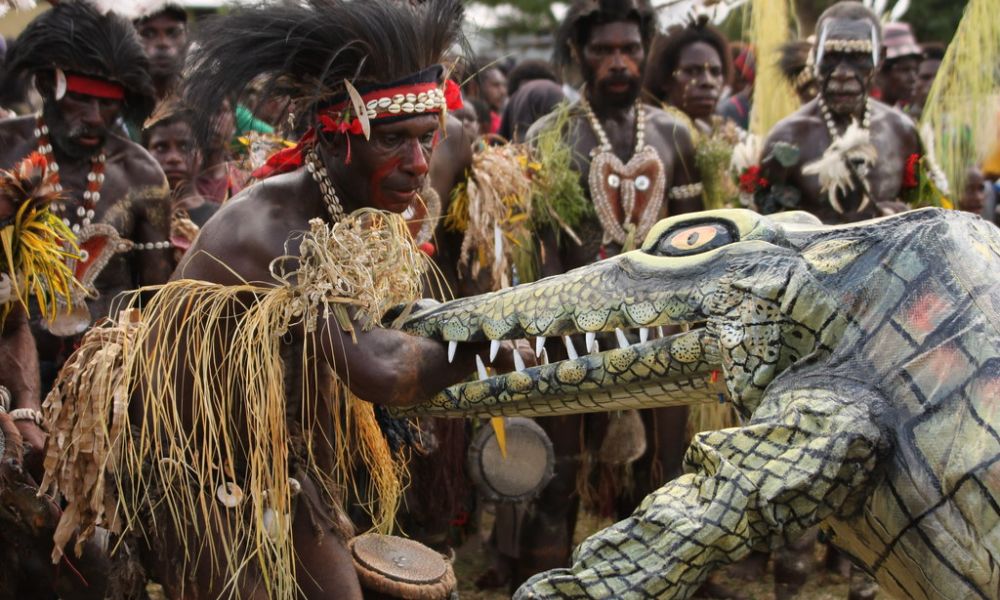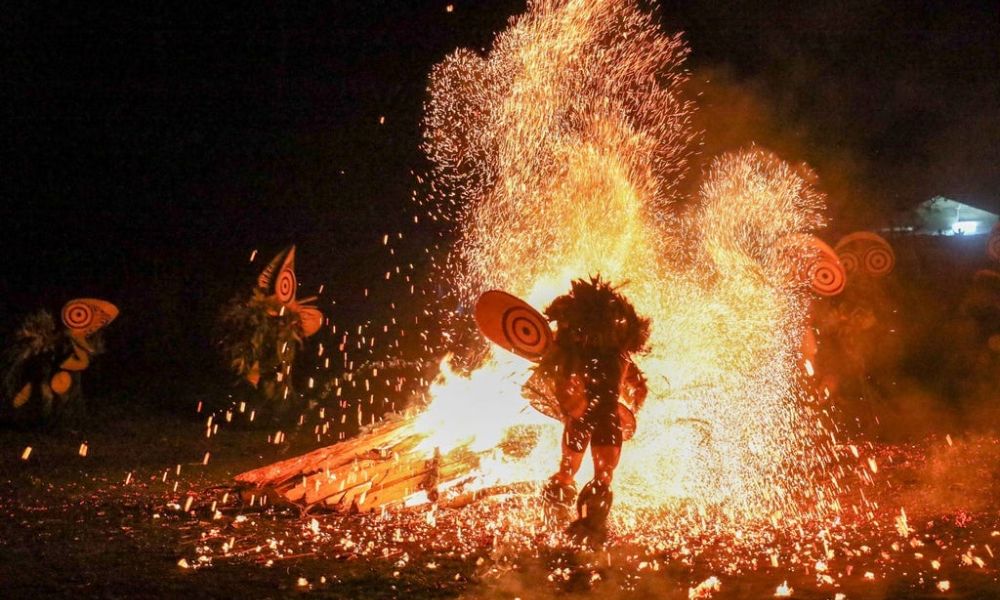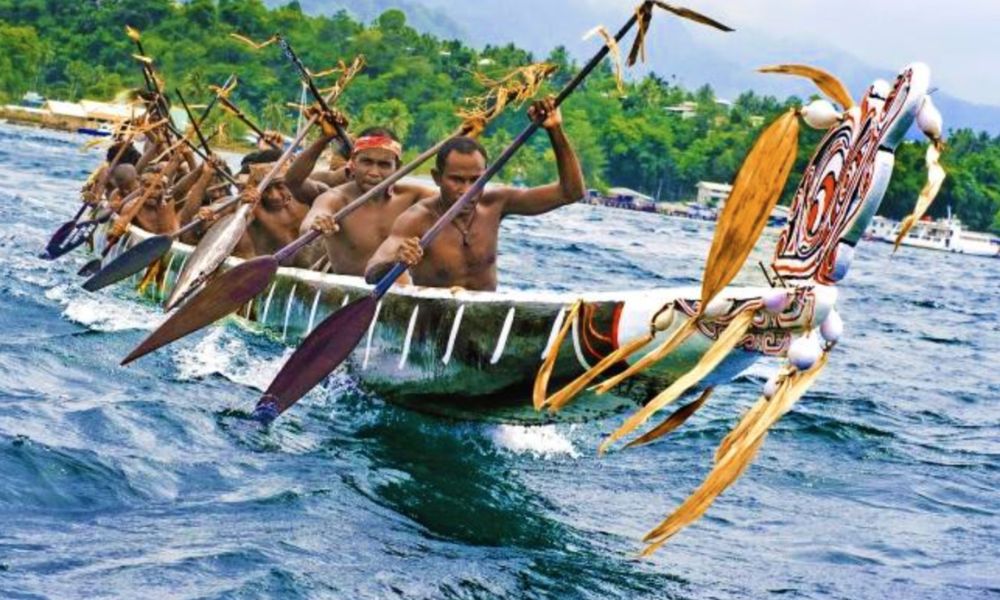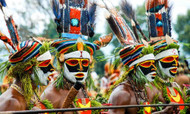7 Famous Festivals in Papua New Guinea
Posted by Maris on 9th Jan 2024
Papua New Guinea celebrates holidays unlike any other place. This place is home to hundreds of tribal groups, each with its own languages, beliefs, traditions, and customs. As such, the sing-sings, or celebrations, are unlike anything you have ever seen. Here is our introduction to some of the most well-known celebrations in Papua New Guinea, complete with eye-popping fire dances and spine-tingling combat reenactments.
Sepik Crocodile Festival

Largest freshwater and saltwater crocs in the world can be found in the Sepik River. The Sepik Crocodile Festival is an opportunity to honor the spiritual and cultural ties that the communities living along the river have with the pukpuk (crocodile).
Tribes arrive decked out in bilas, or traditional body ornaments, and each group showcases their distinct relationship with the pukpuk through songs and dances. Additionally, you can encounter men from the Chambri tribe in the East Sepik province, who are well-known for having scarification in the shape of a crocodile on their arms, chest, and back.
National Mask Festival

The National Mask Festival is an annual event that brings together the numerous tribes in the province of East New Britain to exhibit and celebrate their distinct cultures. Dance and narrative both heavily incorporate masks, and people who wear them are thought to represent supernatural forces. Take in a show of music, dance, and costumes while immersing yourself in mask culture. The Kinavai opening ritual, where Tolai clan members enter in canoes wearing amazing full-body masks to the skin-tingling sound of drums and chanting, is one of the highlights.
Baining Firedance Festival

The Firedance Festival honors the cultural marvel of fire dancing, a well-known custom practiced by the Baining people of East New Britain's Gazelle Peninsula. It is conducted to mark the coming of age for young men as well as the births and funerals of family members. Watch the spirit men of the tribe dance barefoot to mesmerizing drum rhythms while donning enormous kavat masks decorated with prominent lips and large, coiling eyes over a crackling flame. The embers burn out completely before the dance stops.

The Enga Cultural Festival

It wasn't until the 1930s that outsiders made contact with the tribes in the Enga province, and many Engans continue to live according to their traditional customs. The Enga Show was established to aid in the next generations' preservation of cultural traditions and practices. Thousands of tribe members come together to engage in centuries-old rituals, sing, dance, and chant while donning an astonishingly varied array of traditional attire and headdresses. As the Enga Show is still relatively unknown to tourists, be prepared for a unique cultural encounter.
Kenu and Kundu Festival

The ocean has been a plentiful source of life for the tribes of the Milne Bay area for thousands of years. They have a strong affinity to it. The Kenu and Kundu Canoe Festival offers an opportunity to commemorate the mystical bond with water. As tribes unite to compete in an exciting canoe race, watch in astonishment as they paddle as quickly as they can to the finish line. The tribes continue to hand-carve wooden canoes using age-old methods that have been passed down through the generations. In addition, there are performances, dances, and art and artisan fairs that highlight the cultures of the many local tribes.
Mount Hagen Show

One of PNG's oldest and largest yearly festivals, it was established in the 1960s. Awestruck foreign audiences and dozens of tribes come together to celebrate the PNG's amazing cultural diversity through dance, drama, body painting, and costumes. The Huli Wigmen, who are well-known for their distinctive headdresses fashioned from their own hair, may possibly come across to you. A wide variety of delectable dishes are available as well, such as mumu, which is prepared traditionally in PNG using an earth oven.
Goroka Show

The oldest festival in Papua New Guinea is the Goroka Show.This three-day celebration, which takes place the week before Independence Day, draws over 150,000 visitors and is a fantastic way to learn about the various tribes in Papua New Guinea. Savor regional cuisine, tap your toes to traditional music, and take in performances by more than 100 tribes. The Asaro Mudmen may also do a well-known battle dance that deceived their attackers into believing they were ghosts of the dead.

